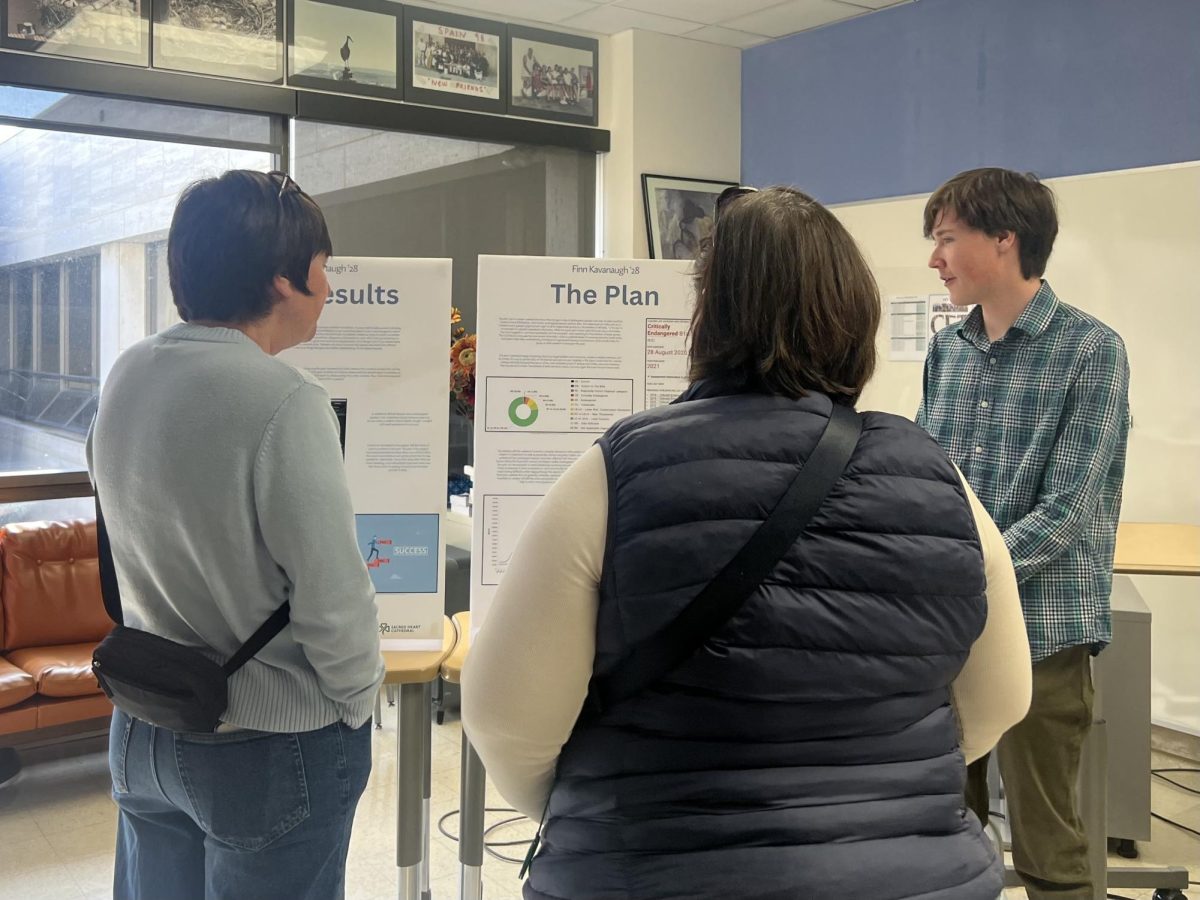As April rolls around, the Inquiry and Innovation (i2) program wraps up its yearly academic exploration, where i2 scholars create yearlong passion projects based on each grade’s yearly theme, such as climate change or A.I. The i2 Showcase, held on April 5th this year, was a chance for each i2 student to present their work throughout the entire DePaul campus. To anyone who came to see, hopefully it was interesting to experience the culmination of everyone’s yearlong projects!
The many projects on display showcased some amazing topics and solutions. The freshman year i2 project theme, climate change, was especially relevant to our lives. Parker Mead ‘28 and Ava Lindner ‘28 worked on “creat[ing] an animal-friendly motorized device to clean up the Great Pacific Garbage Patch. This device will remove trash and microplastics from the ocean without harming the lives of sea animals” (Parker Mead ‘28 and Ava Lindner ‘28). Their work specifically focused on an aspect of climate change caused by negative habits of disposing trash in our everyday lives.
Additionally, Liam Calahan ‘28 and August Bastian ‘28 took on a different approach to climate change through hydroelectricity: “Our initial goal was to make models of different power systems so that people can have a better understanding of where energy comes from and be more informed, and we decided that a good type to start with was hydroelectricity, since it has a lot of potential and is not as well known.” They “built prototypes” and did plenty of work to “research which turbine types were most effective for different volumes of water.” Ultimately, their research helped them achieve a “project [that] is about both being able to replicate a full hydroelectric dam on a small scale and figuring out how to do so most efficiently” (Liam Calahan ‘28 and August Bastian ‘28).
My own i2 project this year, which was partially based on this year’s theme of climate change, was to make a website chronicling how rates of endangered species have changed over time, in terms of worldwide trends instead of individual species. The extinction of species has accelerated over time due to human activities, especially climate change, so I want to create something that can be used to measure large trends in relation to things that could affect biodiversity, such as an oil spill or a new governmental policy. My website’s data will be based on the International Union for Conservation of Nature (IUCN) Red List, which tracks endangered species but doesn’t have much group data, especially from the past. I hope that my project will be a valuable resource – not just for people interested in conservation and how endangered species populations change over time, but also for policymakers or activists who want to learn about what really works to protect biodiversity.
Check out the i2.today website to learn more about Finn’s project and many others from this year’s showcase.








